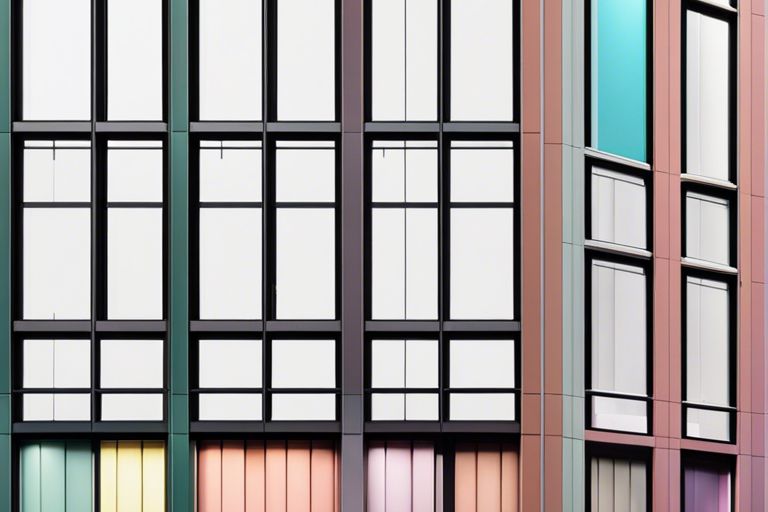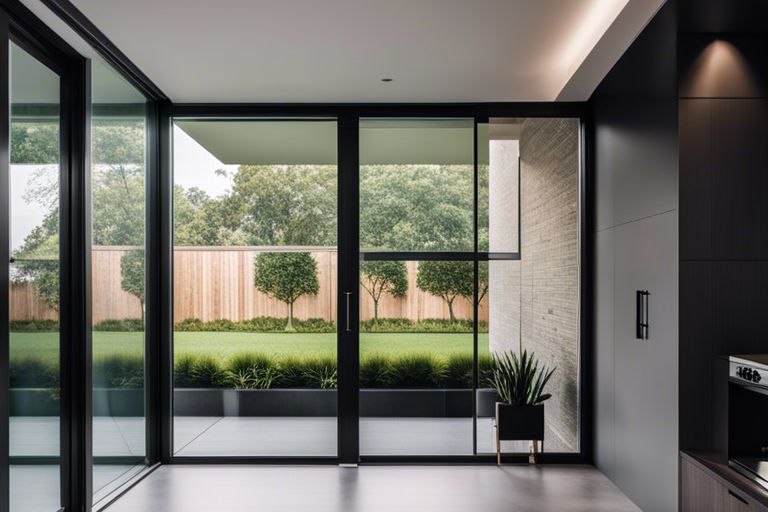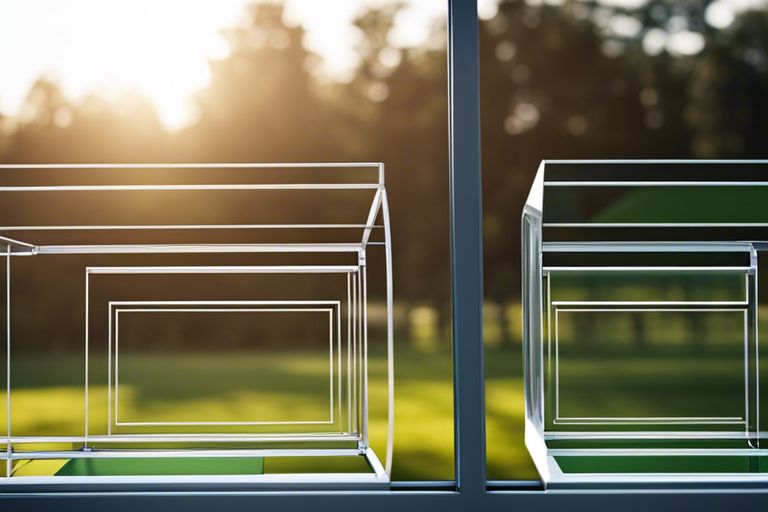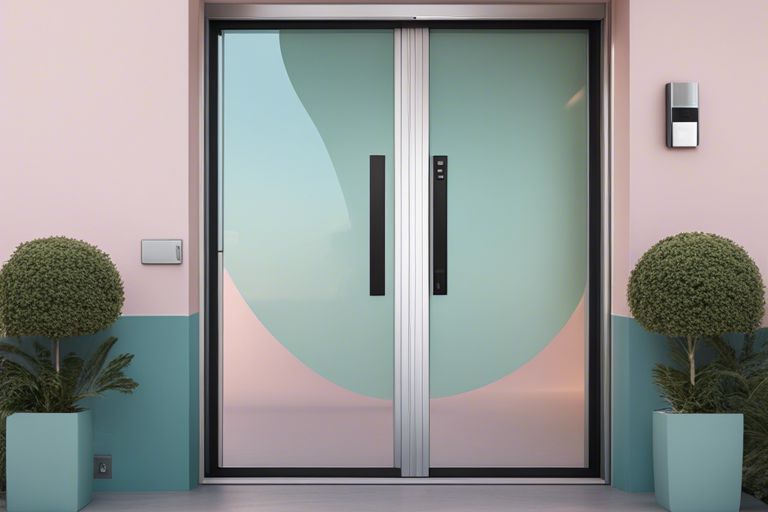When it comes to commercial architecture, curtain walling is a popular choice due to its aesthetic appeal and versatility. But is curtain walling really considered a window solution? This blog post will research into the details of curtain walling, exploring its features, benefits, and whether it can be a substitute for traditional windows. Understanding the role of curtain walling in modern construction is crucial for architects, developers, and building owners looking to make informed decisions about their projects. Stay tuned to discover the important considerations when opting for curtain walling and whether it can indeed be a viable window solution.
Key Takeaways:
- Curtain walling is a separate entity from traditional windows and is considered as a unique building facade solution.
- Curtain walling offers a more aesthetic and flexible design approach compared to standard window solutions.
- Curtain walling provides better thermal performance and sound insulation than conventional windows due to the use of advanced materials and techniques.

The Functionality of Curtain Walling
When considering the functionality of curtain walling, it is important to research into key aspects that define its purpose and effectiveness as a building envelope solution. From providing structural support to enhancing aesthetics, curtain walling serves various roles in modern architectural design.
Light and Visibility
One of the primary advantages of curtain walling is its ability to maximise natural light within a building while offering occupants unobstructed views of the surroundings. By utilising large expanses of glass panels, this system allows ample daylight to filter through, creating a bright and visually open indoor environment. The transparency of curtain walling enhances the feeling of spaciousness within a structure, promoting a connection with the outside world.
However, it is crucial to consider potential drawbacks such as solar glare and privacy concerns when incorporating curtain walling in a design. Proper glazing treatments and strategic positioning of these systems can address these issues effectively, ensuring a balance between openness and functionality.
Thermal Performance and Insulation
Another significant aspect of curtain walling is its impact on a building’s thermal performance and insulation capabilities. While the extensive use of glass in curtain wall systems may raise concerns about heat loss and energy efficiency, advancements in technology have led to the development of thermal break solutions and high-performance glazing options.
By incorporating insulation materials and double-glazed units, modern curtain walling systems can effectively reduce heat transfer and improve overall energy efficiency of a building. It is essential to work with experienced professionals to ensure that the chosen curtain walling meets the required thermal performance standards and contributes to a sustainable built environment.
For architects and developers, understanding the importance of balancing aesthetics with functionality in curtain walling design is paramount. By prioritising energy efficiency and thermal comfort through the selection of appropriate materials and systems, buildings can achieve a harmonious blend of visual appeal and performance.
Comparison with Traditional Window Solutions
When considering curtain walling as a window solution, it is crucial to examine how it compares with traditional window solutions. By understanding the differences in aesthetics, structural design, and installation methods, one can make an informed decision on whether curtain walling is the right choice for their building.
| Aesthetic Differences | Structural and Installation Variations |
Aesthetic Differences
One of the main aesthetic differences between curtain walling and traditional windows is the modern and sleek appearance that curtain walling provides. Unlike traditional windows, which are often small and framed, curtain walling allows for large expanses of glass that give buildings a contemporary feel. Additionally, curtain walling can be customised with various finishes and colours to suit the design preferences of the architect and building owner.
Structural and Installation Variations
From a structural standpoint, curtain walling differs significantly from traditional windows as it is non-load bearing. This means that the weight of the building is supported by the structure itself rather than the windows. Installation of curtain walling also involves specialised techniques and equipment due to the size and complexity of the system. Unlike traditional windows that are fitted into openings, curtain walling is usually installed as a continuous facade, requiring precise planning and execution.
Furthermore, the integration of curtain walling with the building’s structure is a critical consideration to ensure the overall strength and stability of the construction. Proper coordination between architects, engineers, and contractors is essential to guarantee that the curtain walling system is safely and securely installed without compromising the building’s integrity.
The Advantages and Challenges of Curtain Walling
When considering curtain walling as a window solution, it is essential to weigh the advantages and challenges it presents. Curtain walling offers a sleek and modern aesthetic, allowing for large expanses of glass that maximise natural light and provide unobstructed views. It is a popular choice for commercial buildings, particularly those looking to make a statement with their architecture.
Energy Efficiency and Sustainability
Energy efficiency is a key advantage of curtain walling, as it can help reduce heating and cooling costs by improving insulation and preventing heat loss. Additionally, curtain wall systems can be designed with sustainable materials and features, such as low-emissivity glass and solar shading, to further enhance energy performance and reduce the building’s environmental impact.
Curtain walling’s modular nature can present challenges when it comes to maintenance and durability considerations. Regular inspections and cleaning are essential to ensure the system functions properly and remains visually appealing. Furthermore, factors such as weather exposure and building movement can impact the longevity of curtain wall systems, making proper maintenance crucial for their durability.
Maintenance and Durability Considerations
When it comes to maintaining curtain walling systems, it is important to address any issues promptly to prevent potential water ingress or structural damage. Regular inspections should include checking for sealant deterioration and defects in the framing to maintain the system’s integrity and performance. Additionally, scheduling routine cleaning and maintenance tasks can help prolong the lifespan of curtain walling systems.

Integration in Modern Architecture
In modern architecture, the use of curtain walling has become increasingly popular for its ability to seamlessly integrate with the overall design of buildings. Curtain walling provides architects with a versatile solution that allows for large expanses of glass, creating a visually striking appearance that enhances natural light and views for occupants.
Case Examples of Curtain Walling in Buildings
The Gherkin in London and the Shanghai Tower in China are prime examples of how curtain walling has been successfully integrated into iconic buildings. These structures showcase the aesthetic appeal and functionality of curtain walling, demonstrating its ability to create unique architectural statements while meeting essential structural requirements.
The Future of Curtain Walling as a Window Solution
As technology advances and sustainability becomes a top priority in construction, curtain walling is poised to play an integral role in the future of building design. Its ability to improve energy efficiency through enhanced thermal performance and daylighting solutions makes it an attractive choice for architects and developers looking to create sustainable and visually stunning buildings.
With advancements in materials and manufacturing processes, curtain walling systems are becoming more cost-effective and easier to install, driving their widespread adoption in the construction industry. This trend is expected to continue as architects explore innovative ways to incorporate curtain walling into their designs.

Is Curtain Walling Considered a Window Solution?
After examining the characteristics and functionality of curtain walling, it can be concluded that whilst it serves a similar purpose to windows in terms of providing natural light and ventilation, it is not a direct replacement for traditional windows. Curtain walling is better suited for larger buildings where the emphasis is on aesthetics, energy efficiency, and structural integrity. It offers a range of design options and can enhance the overall appearance of a building. However, for individual homes or smaller buildings where operable windows are required, traditional window solutions are more appropriate. To summarize, curtain walling is a valuable addition to architectural design but should not be considered a complete window solution in all cases.
FAQ
Q: Is curtain walling considered a window solution?
A: Yes, curtain walling is considered a window solution, but it is more commonly used for larger expanses of glass on commercial buildings rather than traditional residential windows. It is a non-structural outer covering of a building made of lightweight material such as aluminium and glass.
Q: What are the benefits of using curtain walling as a window solution?
A: Curtain walling offers several benefits, including enhanced natural light, energy efficiency, sound insulation, and aesthetic appeal. It can also be customised to meet specific design requirements and improve the overall appearance of a building.
Q: Are there any limitations to using curtain walling as a window solution?
A: While curtain walling is a versatile option for modern architecture, it may not be suitable for all building types or budgets. Installation can be complex and costly, and regular maintenance is required to ensure long-term performance. Additionally, curtain walling may not offer the same level of thermal efficiency as other window solutions.






